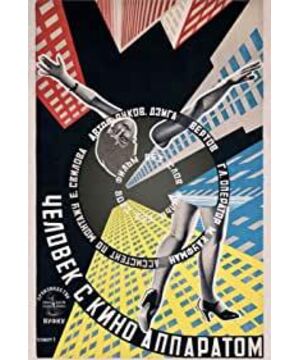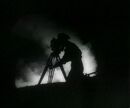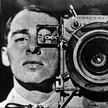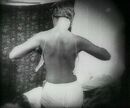Some films are given by the author to the film itself, a gift, a love letter. These films are exploring the essential relationship between the audience, the film and the camera. I have never seen Vertov before watching Abbas. This time, I suddenly understood why I said "movies stop at Abbas". Abbas's life's works are exactly what Vertov said. The montage theory was born from the empirical basis of the Kurishov experiment and built on the theoretical practice of Eisenstein. Subsequently, Du Furenke led it to the poetic school, and Vertov to the experimental school. Rather than an experiment, it was a violent dismemberment of all the films of the time. In an era when the film as the "seventh art" was still widely questioned, Vertov tried to use the technology at the pure lens level to create a universal film language that transcended national borders by completely eliminating the shackles of subtitles, scripts and theaters. Thus, the film is completely demarcated from the language of drama and literature. This may be the first time in film history to challenge the audience's understanding with such an arrogant attitude. It is whipping the audience's inherent cognition: Does a movie have to be narrative? This movie seems to be imaginative, but as long as the attributes of the images are divided, it is not difficult to understand. The film shows two different time-spaces, the first time-space is the time-space of the theater (the audience), and the second is the time-space of the "movie within the film" (the film and the photographer). The film begins to show the first time and space. Vertov uses a linear montage method to show the camera and photographer, the empty theater, the projector and the projectionist, the audience entering the venue, the prepared band...until the projector projects the picture. to the screen. Subsequently, the film transitions to the second time and space. Godard said that the film does not take place on the screen, nor does it take place in the audience's consciousness, but in a certain space between the screen and the audience. The second space shows what Godard called "a certain space". In this space-time, there are two cameras (photographers), namely the camera outside the audience's visual space (hereinafter referred to as the outer camera) and the camera in the audience's visual space (hereinafter referred to as the inner camera). Therefore, the image is thus divided into images captured by two cameras with different properties. The outer camera has an inclusion relationship with the inner camera. Therefore, some of the images it shoots do not contain an internal camera, that is, the "movie" we watch in the usual sense; the other part contains an internal camera, that is, the "experimental" part of the film. From the content point of view, "Shadow Time and Space" shows the awakening, work and entertainment of a city in turn. The repeated montage of the camera's lens and the photographer's eyes emphasizes the director's "self-referential" intention. This is a "reflexive" shooting practice, in which the director directly presents the working situation of the shooting team and the fact that the audience is watching a processed film rather than "reality". In addition to the frequent occurrence of the photographer's work scene, the film also uses the method of parallel montage to edit the editor's work scene and the edited image back and forth, in order to remind the audience: "What you see is not the truth of reality". Although Vertov intends to create a proletarian revolutionary film by combating the bourgeois traditional expressions of old Russian cinema through pure cinematic language that transcends national boundaries. But his ambitions undoubtedly failed at the time. The grammar he made up was so difficult that his "language" was simply incomprehensible and acceptable to the proletarian masses. But from now on, the result is obvious. His change of direction has established a new possibility for the film, and a large number of directors influenced by him, headed by Abbas, have made outstanding contributions to the development of film art. Needless to say, no matter how "narrowly elitist" it may seem, the film is still a practice based on montage theory. But unlike Eisenstein and Pudovkin, Wildov was clearly influenced by the prevailing Dadaism of the time. In the era when the Bolsheviks had just seized power, it was not difficult to understand this tendency. Vertov wanted to destroy the existing artistic norms of capitalism in the way of film. Moreover, this film is also fully in line with the characteristics of Dadaism, that is, there is no theme, no plot, and the pursuit of bizarre visual effects. It has been mentioned above how complicated the influence materials of different attributes are in "Shadow-in-Shadow". As one of the representatives of Soviet montage technology, Vertov used his mysterious montage code to create images in disordered and messy images. In the material, a complete chain of meaning is woven through splicing. The film uses a lot of montage techniques. For example, in the part of the city waking up, the close-up of the woman's eyes is juxtaposed with the window sash and camera lens blown by the wind; in the part of the city's work, the close-up of the man's eyes is juxtaposed with the bird's-eye view of the street buildings, all in a kind of The technique of metaphorical montage highlights the self-referential meaning of the camera and guides the audience to distinguish different image properties. In addition to montage, the film also uses a lot of avant-garde techniques, including slow motion during diving, reverse action shots of people on the street, vertical/horizontal splits that appear many times... Among them, the most experimental is the use of overlay. In the Hollywood formula, dissolves are generally only used as a technical transition. But in Vertov's film, the dissolve is used in the actual composition and assumes its unique narrative function. This type of superimposed shot has been used many times in shooting urban exteriors, and the time and space are re-cut in a unit shot, showing the subversion and destruction advocated by Dada's main force. "The Man with the Camera" is a masterpiece that gathers pure technology and avant-garde creative concepts. Its almost crude "self-reference" is the essence, and it is also one of the main creative concepts and aesthetic strategies of post-modernist art. It tells the audience that people are not only the objects to be photographed and studied, that is, objects, but also the subjects who make photography and research behaviors. If man is the identity of subject and object, then reality may be constructed unconsciously and socially, that is, together with others in the changing relationship of subject and object. Anything can mean anything, anything can symbolize or represent something else, anything can become anything, but only to groups, never to individuals. So what is a person? What is the essence and subjectivity of man? Perhaps, as Foucault said, "man is dead". Since the birth of movies, people are more like products of modern society. "The Man with the Camera" is a masterpiece that gathers pure technology and avant-garde creative concepts. Its almost crude "self-reference" is the essence, and it is also one of the main creative concepts and aesthetic strategies of post-modernist art. It tells the audience that people are not only the objects to be photographed and studied, that is, objects, but also the subjects who make photography and research behaviors. If man is the identity of subject and object, then reality may be constructed unconsciously and socially, that is, together with others in the changing relationship of subject and object. Anything can mean anything, anything can symbolize or represent something else, anything can become anything, but only to groups, never to individuals. So what is a person? What is the essence and subjectivity of man? Perhaps, as Foucault said, "man is dead". Since the birth of movies, people are more like products of modern society. "Man with a Camera" is a masterpiece that gathers pure technology and avant-garde creative concepts. Its almost crude "self-reference" is the essence, and it is also one of the main creative concepts and aesthetic strategies of postmodern art. It tells the audience that people are not only the objects to be photographed and studied, that is, the objects, but also the subjects who make photography and research behaviors. If man is the identity of subject and object, then reality may be constructed unconsciously and socially, that is, together with others in the changing relationship of subject and object. Anything can mean anything, anything can symbolize or represent something else, anything can become anything, but only to groups, never to individuals. So what is a person? What is the essence and subjectivity of man? Perhaps, as Foucault said, "man is dead". Since the birth of movies, people are more like products of modern society.
View more about Man with a Movie Camera reviews







